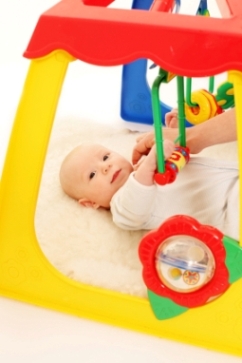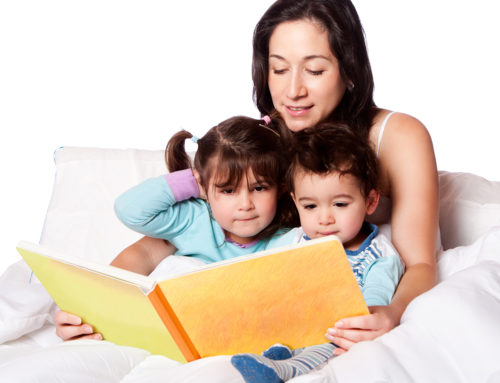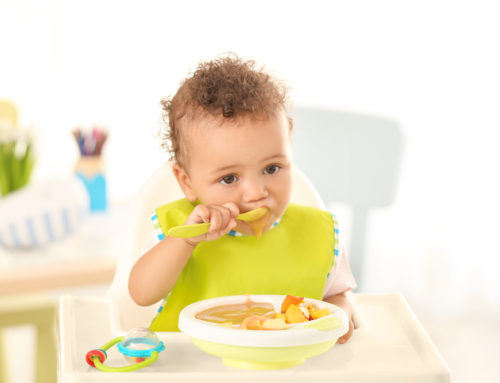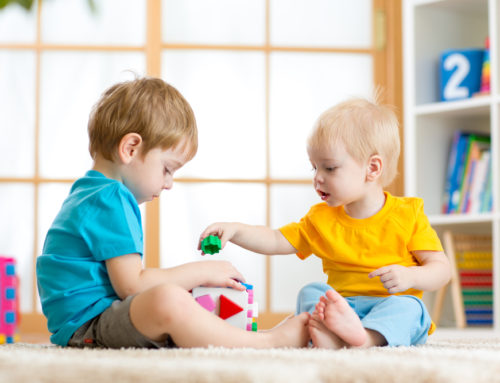With the holiday season upon us and the New Year right around the corner, it’s that time when we take stock of all that’s happened in the past twelve months—and that includes your baby. From her first smile to her first step, there are plenty of moments at which to marvel and to record in her baby book. Here’s what you can expect will happen to your new baby, developmentally speaking, in her first year—and what you can do if those milestones aren’t being met.
Bonding from Birth
From the minute you lay eyes on your newborn, you are fostering a relationship that will affect her overall development. “A solid foundation of nurturing…lays the groundwork for the optimal development of your baby,” says Ingrid Johnson, an early parenting educator. As immediately as just after birth, babies will experience responsiveness to parental voice, touch and comfort—all of which is teeming with tremendous health benefits. “Neural pathways and brain synapses are forming in direct relation to nurturing,” she adds, pointing to the impact on infant brain development.
From then onward, your baby continues to grow and achieve milestones that fall into such areas as gross motor skills (large muscles), fine motor skills (small muscles,), language/communication and personality/intellectual development. In her book Baby 411, pediatrician Dr. Ari Brown details which milestones fall into each area of development and the average age when they are met. The following is a sampling of those milestones:
_x000D__x000D_
Gross Motor Age achieved
_x000D_
Lifts head 0-2 months
_x000D_
Rolls over 2-4 ½ months
_x000D_
Sits alone 5-8 months
_x000D_
Pulls to stand 6-10 months
_x000D_
Walking holding on (cruising) 7 ½-12 ½ months
_x000D_
Stands alone 9 ½-14 months
_x000D_
Fine Motor Age achieved
_x000D_
Brings hands together 1 ½-3 ½ months
_x000D_
Grasps objects 2 ½-4 ½ months
_x000D_
Able to feed self a cracker 4 ½-8 months
_x000D_
Drinks from a cup 10-16 ½ months
_x000D_
Language/Communications Age achieved
_x000D_
Smiles 0-2 months
_x000D_
Laughs 1 ½-3 ½ months
_x000D_
Makes squealing noises 1 ½-4 ½ months
_x000D_
Turns to someone’s voice 3 ½-8 ½ months
_x000D_
Says “Dada” or “Mama” 9 ½-13 ½ months
_x000D_
Personality/Intellectual Age achieved
_x000D_
Plays peek-a-boo 6-9 ½ months
_x000D_
Looks for hidden object 5-8 months
_x000D_
Shy with strangers 5 ½-10 months
_x000D_
Plays pat-a-cake 7-13 months
When Milestones Are Not Met
While Dr. Brown cautions that there is a range for every milestone, she advises parents to further investigate when over 90 percent of children have reached a particular milestone. “For example, 50 percent of babies are walking at 12 months,” she explains. “But 90 percent of children at 15 months are walking, so that is when a child would be considered delayed. Your child’s doctor is watching all of these milestones closely when you come in for visits at regular intervals.”
If your pediatrician feels that it’s appropriate for your child to undergo an evaluation, numerous resources are available for parents, including government-funded early childhood intervention programs and community programs such as Easter Seals. Two helpful sites to consult are the National Association of Parents with Children in Special Education (http://www.napcse.org/exceptionalchildren/earlychildhoodintervention.php ) and Easter Seals (http://www.easterseals.com). Additional services include developmental assessment programs, physical therapy, occupational therapy, speech and language services—all of which are available for both paid and insured families.




